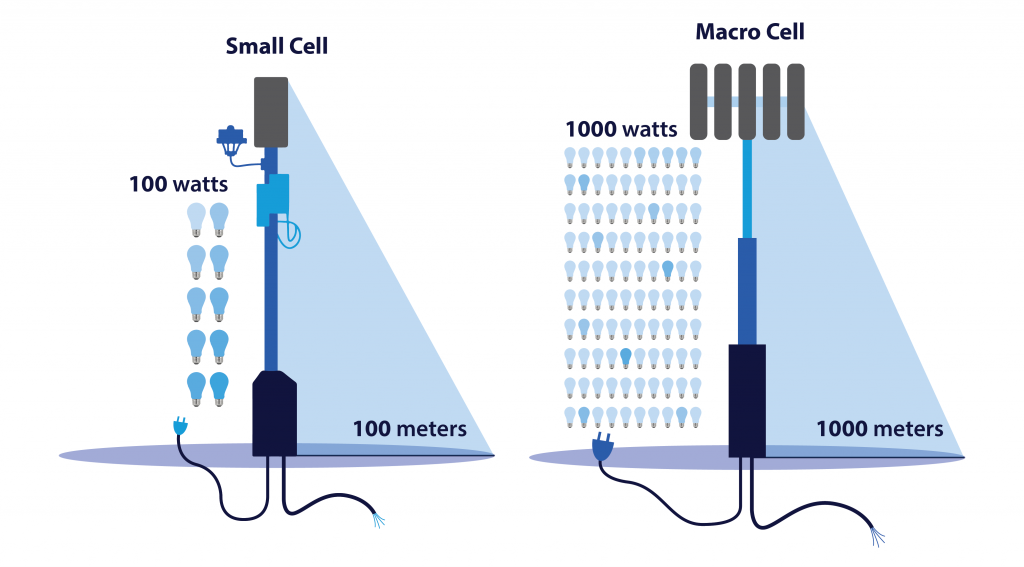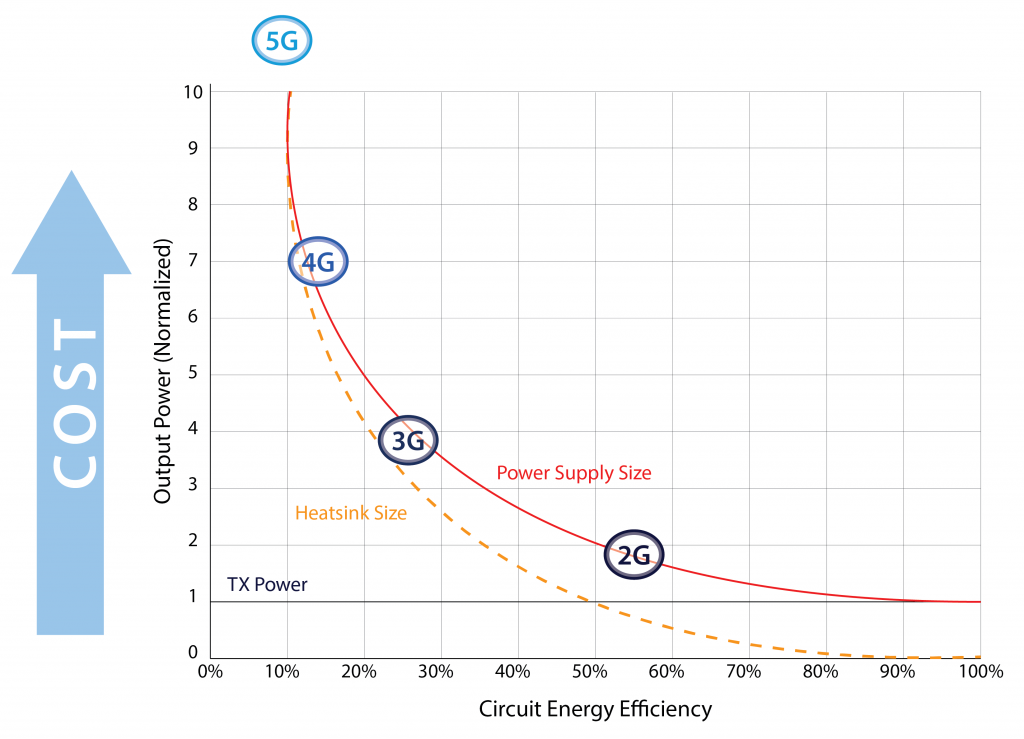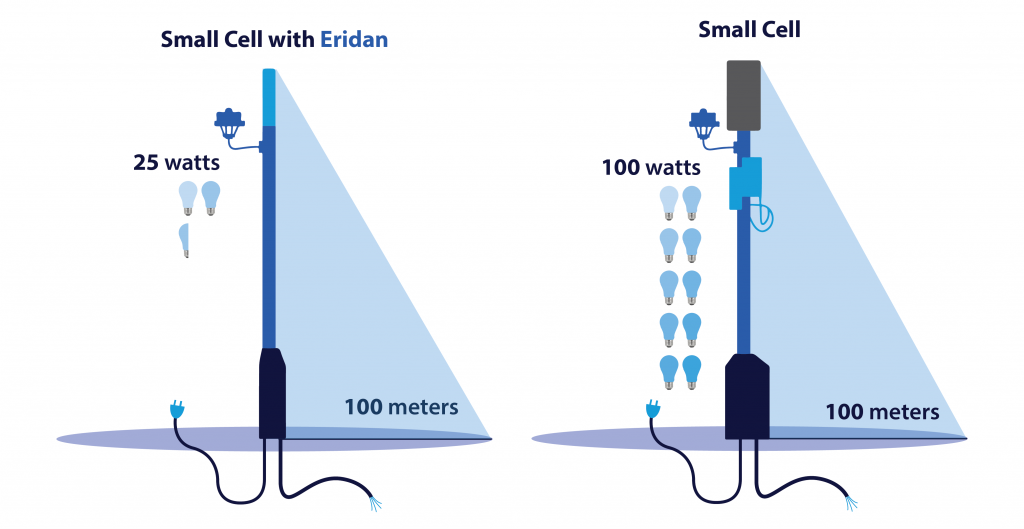Based on telecommunication ads, it feels like 5G is everywhere. In reality, 5G has three major constraints hindering widespread distribution: spectrum, energy, and money. Current 5G technology is financially inefficient and unsustainable because as equipment becomes less power efficient, it gets more expensive to install with each network generation. This article explores 5G installation requirements, the source of increasing costs, and solutions toward a more sustainable network.
What do you need to install 5G?
 5G needs small cells and macro cells which, similar to the Wifi modems in your home or office, wirelessly connect devices to the core network. Unlike retail Wifi modems, small cells and macro cells commercially connect many devices within a given radius. They are the reason you can stream a video while waiting for the bus or call your friends while you go on a walk.
5G needs small cells and macro cells which, similar to the Wifi modems in your home or office, wirelessly connect devices to the core network. Unlike retail Wifi modems, small cells and macro cells commercially connect many devices within a given radius. They are the reason you can stream a video while waiting for the bus or call your friends while you go on a walk.
The difference between small cells and macro cells is scale: macro cells require 1000 watts to cover a 1000 meter radius, while small cells require 100 watts to cover a 100 meter radius. For consistent power supply, power hubs are housed in outside plant cabinets, like those metal boxes that you might find on a sidewalk near a street lamp.
 Small cells and macro cells also need an inefficient linear power amplifier, to boost the signal, which needs a large heatsink. Heatsinks represent wasted power: heat absorbed by the heatsink is power lost. As equipment moves into higher order QAMs to save on spectrum usage, the power efficiency of the amplifier has gone down with each generation, requiring a larger heatsink over time!
Small cells and macro cells also need an inefficient linear power amplifier, to boost the signal, which needs a large heatsink. Heatsinks represent wasted power: heat absorbed by the heatsink is power lost. As equipment moves into higher order QAMs to save on spectrum usage, the power efficiency of the amplifier has gone down with each generation, requiring a larger heatsink over time!
Where do the costs come from?
It is becoming increasingly expensive to install these power-hungry cells: the power hub needs to be installed on the sidewalk; the pole needs to be reinforced to handle a larger heatsink and a fan to cool everything down. Neglecting these cells is not an option either because they are essential to 5G distribution, so increased installation costs adds unnecessary pressure to mobile network operators (MNOs), such as AT&T and Verizon, installing 5G.
Besides capital expenditures, pushback exists from cities that reject power hubs on sidewalks and bulky equipment on street lamps; cities like Denver, Colorado, Dewey Beach, Delaware, Omaha, Nebraska, Los Altos, California, and Dayton, Ohio. This leads to legislative issues, like MNOs suing Los Altos for blocking installations. Costs may be absorbed for this generation, but what about future generations?
What’s the solution?
 Eridan’s MIRACLE module can solve these issues. Our hyper-efficient radio produces ultra-clean signals, removing the need for a linear power amplifier and a big heatsink. Small cells using our technology can be discrete without a fan, heatsink, or power hub.
Eridan’s MIRACLE module can solve these issues. Our hyper-efficient radio produces ultra-clean signals, removing the need for a linear power amplifier and a big heatsink. Small cells using our technology can be discrete without a fan, heatsink, or power hub.
Besides better power efficiency and curb appeal, no coverage is lost; we generate the same signal the same distance at 1/4th of the power.
The future of telecommunication equipment should give peace of mind to MNOs providing 5G and to end-users, like you and me, enjoying great connectivity without seeing and hearing the equipment that makes it happen. Eridan is the future of telecommunication equipment.